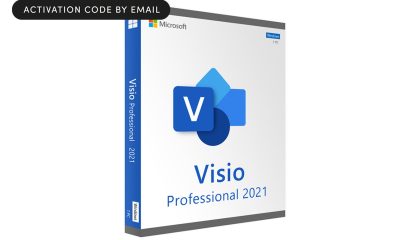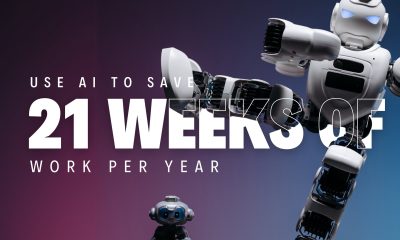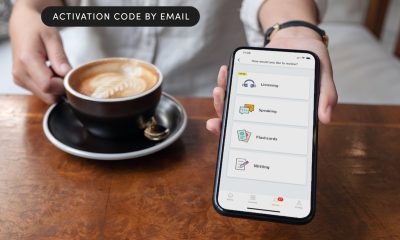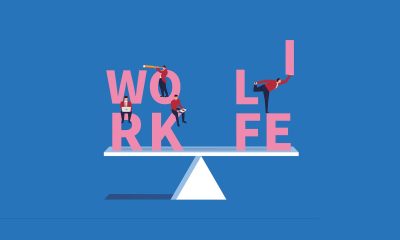Make Money
7 Things You Need to Know About How to Get a New Job in 2023

Editor’s Note: This story originally appeared on The Penny Hoarder.
The U.S. economy saw an average of nearly 400,000 new jobs each month in 2022, according to the Bureau of Labor Statistics. There’s a total of 10.3 million job openings out there.
While there is a great demand for people to fill these jobs, there are also record numbers of employees changing careers, hopping into a job search and swapping old jobs for better ones.
So if you are hoping to get hired, you need to stand out to hiring managers, polish your resume, think about your transferable skills, and yes, learn how to interview with a robot.
Oh, and embrace the idea of remote work if you haven’t already. Though some higher-profile companies are bringing employees back to the office, most companies have embraced some type of remote work option.
There are a lot of jobs out there and potential employers continue to lament that they can’t find enough help. So, yes, you can be picky but you still want to be prepared to find a new job you want, not just any job.
1. Decide What’s a Good Fit for You
Not every job is created equal, and not every job is the right job for you. If you’re not a people person, a sales job might be drudgery for you. Or if you like peace and quiet at work, you probably don’t want to be a bartender.
Think through potential jobs and how they would reflect your personality before you go for an interview. Here are some examples:
- Are you an introvert? What if your day job could feed your introverted energy? There are quite a few jobs that could do just that. From archivist and medical records technician to accountant and librarian — you can build your career around being an introvert.
- Would you love a job that pays you to help save the world? Postings for “green” jobs — positions like arborist, conservation worker, hazardous materials removal worker and wastewater treatment operator — grew by 8% in 2022.
- Are you a morning person? There are many jobs out there for people who wake up before the sun. Whether it’s a flight attendant, supermarket stocker, barista or personal trainer, morning people have plenty of options when it comes to working.
- On the flip side, are you a night owl? You could be a nanny, a mail sorter, a bartender or even a limo driver.
- Do you need cash but are not ready for a full-time job? Whether you’re a busy college student or already are locked into a career but need more room in the budget, there are plenty of side gigs out there — ride-share driver, freelance writer, pet sitter, online tutor and more.
- Detail oriented? Grab a notepad and make a list of these jobs for Type A personalities. We’ll give you a spoiler, though — some great options include event planner, proofreader, virtual assistant and data entry clerk.
2. How to Create the Best Resume
Now that you know what type of job you’re best suited for, it’s time to get down to the nitty-gritty. Let’s start with a resume.
There’s a fine line between making your resume stand out and conforming to norms employers expect that simplify the hiring process for them.
Your Resume’s Format
Here are a few basics for a resume format:
- Keep it to a page or a page and a half max, with a lot of white space.
- An online resume can include hyperlinks to your portfolio or other examples of your work.
- Always send it as a PDF.
- Avoid novelty fonts and stick with Arial, Times Roman or Cambria.
Your Resume’s Content
Along with the basic contact info, educational background and work experience, be sure to include the following:
- Use keywords on your resume, typically in the job description within your work experience. But only use words that fit logically. Don’t pepper every possible keyword into your resume.
- Academic or professional honors
- Additional software skills, certifications or other training
- Interesting hobbies, volunteer work or organizations
The final, and most important tip: Proofread. Proofread. Proofread. Get a friend to proofread. Get another friend to proofread. Then proofread again.
3. Write a Great Cover Letter
Ugh. You finish the resume and then there’s that dreaded cover letter.
It has to say why you are the best person for the job without sounding like you are full of yourself and spewing all the usual accolades. Here are some basic tips for how to write a cover letter.
- Never write “Dear Sir or Madam.” Try to find the name of the hiring manager or open with “Dear human resources team.”
- Keep it all to one page — or less.
- Offer specifics about what you like about the company and the position. Read up on the employer to find something distinctive.
- Tout your experience and skills without sounding like a braggart. This is a fine line but it’s very doable. Instead of, “I know more about X than anyone around,” try, “I know my three years of experience in X give me the background to be an important part of your team.”
- Find a value or past experience you have that aligns with this company’s growth or philosophy.
- Talk about the next steps such as following up with a call or email, scheduling an interview or attending an open house.
4. Master an Interview With a Webcam
In the era of remote work, the interview process is more and more remote, too.
Sometimes a live interviewer doesn’t even enter the process until the second round. Sadly, employers have discovered that they can review 20, 30 or 50 applicants without dedicating a live person to the task.
So you’ll need some video interview tips for your meeting with a robot. Using artificial intelligence, it will assess your body language and eye contact along with responses to written or oral questions.
Make a list beforehand of phrases such as “team player” or skills used in the job posting, and be sure to use them in your responses. Example: If the job requires three years of experience, use the phrase “three years” or “more than three years” in your responses.
5. Remember to Say Thank You
It’s not sucking up. It’s a common courtesy that employers not only notice, they pretty much expect. If you meet with an actual person online or in person, be sure to get their email address so you can send a thank you email for their time and consideration.
This is another opportunity to set yourself apart from others.
Reiterate points you made in your interview that you can tell went over well: “As we discussed, I would add X to your team” or “I have a great interest in and experience with your latest endeavor, X.”
You can also include one or more examples of your work that you hadn’t sent before but realized during the interview would be helpful.
6. Continue Following Up
Yes, you might risk feeling like a stalker, but it’s perfectly acceptable to check in on the hiring process after your thank you email.
Be sure to ask about the hiring timeframe during your interview, so you can reference it when you follow up. Most employers take longer than they expect, so chances are you won’t hear about the job within their projected time. And, sadly, fewer and fewer companies let you know if they’ve filled the job with someone who isn’t you.
So a couple of weeks after your interview, it’s fine to send a casual email checking in to see if there are any updates.
When deciding how to follow up after an interview, remember to keep things casual, non-demanding, respectful and self-confident. No one wants to hire a candidate who sounds impatient, desperate or passive-aggressive.
7. Be Open to Remote Work
It’s a new era in the job market with remote work. Only 47% of office space is occupied in 105 markets, according to the U.S. National Bureau of Economic Research.
It’s also an ever-changing world, with needs for new products and services. Entrepreneurs can launch businesses to meet those demands.
Read the full article here

-

 Passive Income6 days ago
Passive Income6 days agoThe One Microsoft Design Tool Business Owners Shouldn’t Miss
-

 Side Hustles4 days ago
Side Hustles4 days agoThe DOJ Reportedly Wants Google to Sell Its Chrome Browser
-

 Investing5 days ago
Investing5 days agoThis Founder Turned a Hangover Cure into Millions
-

 Investing6 days ago
Investing6 days agoYour Firsthand Experiences Shape the Way You Run Your Business — Here’s How Mine Shaped Me
-

 Side Hustles4 days ago
Side Hustles4 days agoHow to Create a Unique Value Proposition (With Tips & Examples)
-

 Investing3 days ago
Investing3 days agoAre You Missing These Hidden Warning Signs When Hiring?
-

 Side Hustles6 days ago
Side Hustles6 days agoHow These 5 Founders Changed Franchising Forever
-

 Side Hustles5 days ago
Side Hustles5 days ago5 Indicators Your Business Needs a Rebrand


















